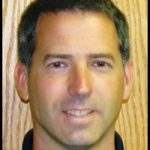How do you approach teaching golfers with adaptive needs?
Image credit: Adaptive Golf Academy
Take on the challenge of Blind and Adaptive Golf!
Getting involved in Blind and Adaptive instruction is an enjoyable and rewarding experience. In general, I recommend you approach your students with limitations and challenges the same as you do all of your players. Do your homework, and have a plan in place to help each individual get the most out of what they have available. Learn their tendencies. Joe Grohman (PGA Disabled Golf Committee) stresses that “care, commitment, compassion, and consideration” are the tools needed to help develop their game to the best of their ability and to have a good experience at the golf course.
Everyone has something they are dealing with and no one wants to be patronized. Learn their unique situation, and take on the challenge honestly and as a team. For example, if you have a Blind student who wants to learn the game, read the Blind Training Manual, practice and play blindfolded. For amputees or wheelchair players, hit some balls one-handed or in a wheelchair, etc. Basically try to gain a better understanding of their needs and challenges by walking a mile in that person’s moccasins.
Try to get some guidance and direction from Professionals with experience in adaptive golf by attending a PGA clinic or assist an established disabled golf instructor. Basically there is no right or wrong way to swing the club here, and that player is his or her own standard.
Trial, error, and experience are your best instructors, so don’t be afraid of setbacks as long as you learn from them. Be relentlessly positive and your student(s) will appreciate your taking on this challenge together!
Established by Howard Shaw in 1992, the California Blind & Disabled Golf Program is entering its 28th year. The program has further developed with the Lions Club International volunteers, and PGA Golf Professionals, continuing to grow to pursue several goals.
First, and foremost, we hope to introduce more blind and disabled individuals to this wonderful life-changing activity. The program strives to mainstream Blind, Disabled and Adaptive golf through many activities such as free clinics and training sessions for coaches, caddies and players. We also promote easier access to facilities, and instruction and support for stroke victims, people with progressive disabilities and those hoping to get back to the game after catastrophic injuries or disabling accidents.
In addition, we continue to host events and competitions to challenge the skills of the participants and fully embrace the comradery, and enjoyment of the game for all comers! There is never a fee charged for instruction, clinics, or equipment! In addition, every effort is made to subsidize the expenses for the participants.
This program is funded through participation in events and your generous donations.
Thank you for your interest and involvement!
Go to OldeSchoolGolfSchool.com and download the Blind Golf training Manual free of charge. Please share with anyone interested. 100% of the donations for the California Blind and Disabled Golf Association cover lodging, transportation, meals, equipment and other expenses for Blind, Disabled and Special Olympics students.
Feel free to contact me directly with any questions.
Robert M. Kotowski, PGA
Director of Instruction, Olde School Golf School
California Blind and Disabled Golf Association
Santa Catalina Golf Course
Zaca Creek Golf Course | Buellton, CA 93427
805.698.6224 | [email protected]
Adapting to Adaptive Coaching
A teacher must be able to adapt to the needs of students. No where is this more apparent than a situation where one is instructing a golfer with adaptive needs.
Asking questions of a person with adaptive needs maybe a delicate situation but some discovery needs to be done to better understand the students challenges and what will be required to proceed.
I have taught and continue to teach students with a variety of adaptive needs from sight impaired to stroke recovery including amputees, para golfers, hearing impaired, PTSD, TBI and other illness, injury and challenge. My experience has been that just as all students are incomparably different, the adaptive needs golfer is as well. Prior to the lesson search out all that you can about your adaptive needs student. Talk with the students medical providers. If the student is in therapy invite the physical therapist to attend the lessons.
Surround yourself with medical professionals who know and understand the adaptive needs environment and listen to there advice and suggestions.
Really want to improve your golf game? Get incredible swing tips delivered to your inbox every week.
How to approach teaching golfers with adaptive needs
Learning everything we can, prior to the scheduled lesson, is always very helpful when teaching golfers with adaptive needs. Scheduling a 30 minute buffer before and another 30 minute buffer after the golf lesson is a great strategy to ensure that the student and coach are comfortable and that the transition time goes smoothly. When the instructor smiles a lot and is encouraging in every way, the student is more prone to become relaxed and enjoy the lesson experience. Encouraging follow up lessons and being consistent with motivational tactics for game improvement is a must. Teaching golfers with adaptive needs is a coaching opportunity. It is a chance to inspire and encourage the will of an athlete. It is an opportunity to bring everyone into the game of golf. An opportunity that should not be missed!
Get PGA HOPE Certified
I had no idea how creative you have to get to teach people with disabilities until I went through the PGA HOPE training class with Judy Alvarez. She taught us to think outside the box. We had to put ourselves in situations that emulate an adaptive golfer. We had to use special equipment that had different length and lie clubs that were extremely different from standard. And then the techniques used to swing change is you are wheelchair bound or missing a limb or blind in one eye or both, etc. As a result, you might as need to create different tee heights that are different than normal to accommodate the extreme changes in equipment based on the limitations.
When teaching adaptive golfers, the most important thing is just getting the ball in the air and make sure they are having fun doing it. So don’t worry about USGA regulations. Just help these folks to have a great time while showing them that anything is possible if we put our minds to it!
No one answer
These players come with a wide variety of challenges. We must be prepared with ideas for each different issue. Not unlike players without adaptive needs we must assess them and work with their strengths.
I was teaching a gentleman with CP a few years back. When he used both hands to grip the club he struggled to hold on, however when he went to gripping only with his less affected arm he could control the club, and was much more successful.
We all have challenges, some more complicated than others. As an instructor I see golf as a game most can participate in and with proper coaching can get great joy from.
Working With Wounded Warriors
The highlight of my teaching career is working with our Wounded Warriors. Being able to take golf, and use it as a rehabilitation tools is a very unique and understated tool that many sports simply can’t mirror. When working with wounded warriors, the teaching methodologies are tested and challenged. Instructors who can teach golfers with adaptive needs (mentally or physically) stand out as some of the best in the nation.
For instance, when a golfer may not have the use of their trail leg, it becomes challenging to teach a foundation of the sport like “weight-shift”. During my interactions with a similar student, he struggled to get the ball airborne and on line. We simply strengthened his grip, and had him put the ball further back in his stance. With a very strong grip, and the ball in the middle back of his stance, he didn’t have to shift his weight, and his clubface was square at impact. He said he hit it further than when he had the use of both legs.
Although I was grateful to help a wounded warrior, I learned that golf is much more than a sport, and can be used as a therapeutic tool in one’s recovery. For all the wounded warriors out there, please visit SwingEssentials.com and use the coupon code “Warrior” for a free golf lesson. Thanks for your service.
Flexible Teaching Methods
I have been lucky enough to be affiliated with the PGA HOPE Program since its inception in the Philadelphia Section.
Over the years I have dealt with many different challenges. Prosthetic arms, legs and PSD. What I have found is you need to be flexible in your Teaching methods. Everyone is completely different and what worked for one person may not work for another person.
I like to communicate a lot with the wounded Veterans I work with. I need their feedback to know if I am asking them to do something that is causing discomfort or that they are not comfortable with doing. It is definitely not an exact science, there can be a lot of trial and error but if you are persistent you can definitely help them to see positive results.

Five Ponds Golf Club | Flagler Golf Academy, Warminster, PA
Everyone's Able
I approach every student the same. I am not a “model” teacher. I prefer to build on improving clubface position, impact quality and shaft path through solid fundamentals based on unique physical abilities that the player has. I believe I am the one that has to be adaptive to fit the needs of every player! This game can be for everyone.
Building a lesson for each individual
Most, if not all of us have some form of limitation in movement. I make it a point to ask each student if they have any physical limitations that may restrict them during the golf swing. Once I have this information I will watch them hit balls and then build a game plan to help that individual get back to the ball in the most efficient and effective way possible. This will typically involve a modification in their set-up and potentially how they move the club too. At the end of the day, there isn’t a box lesson that you can teach anyone, however some people need a little more “grey area”, as it pertains to the fundamentals and swing than others.







